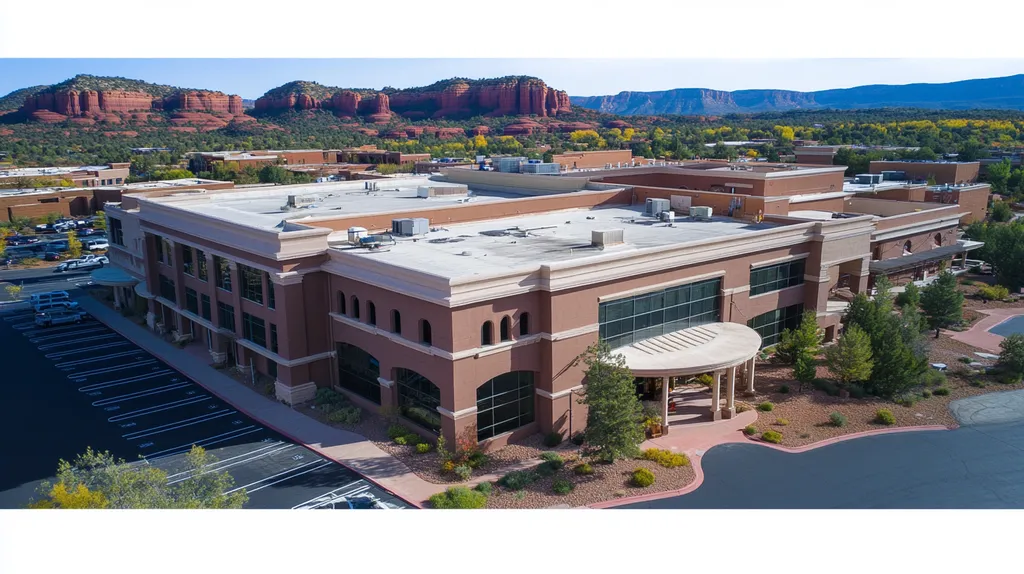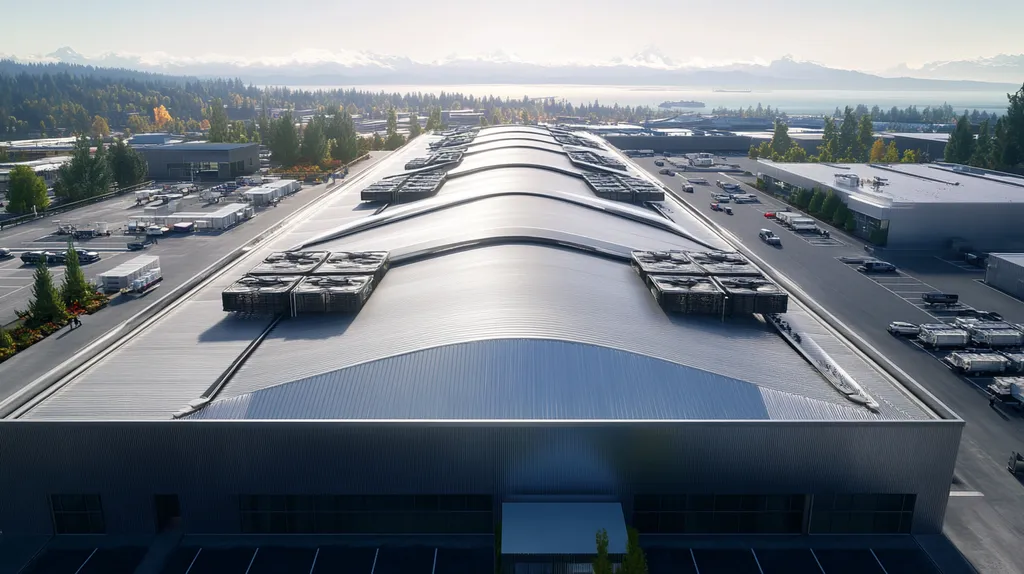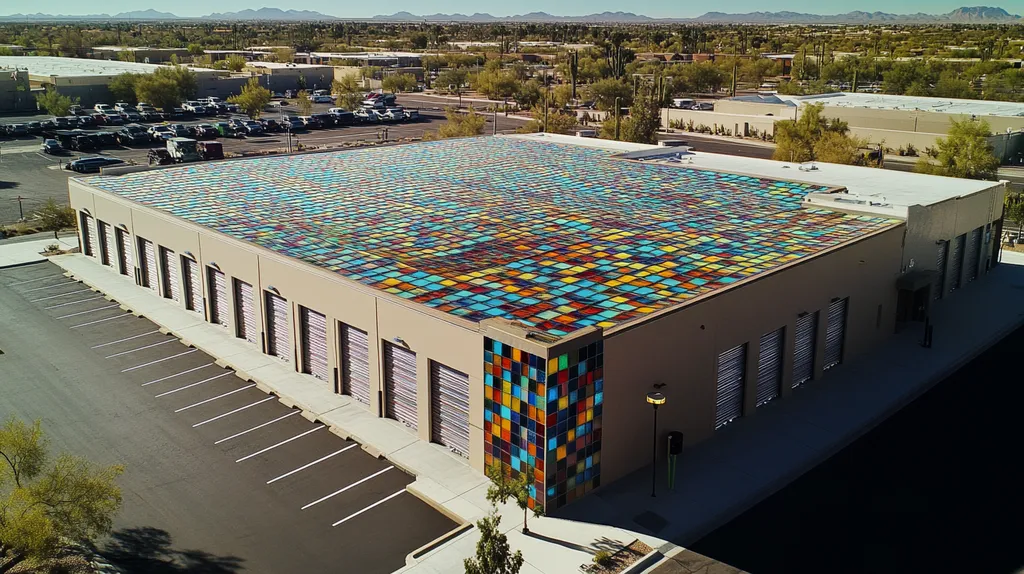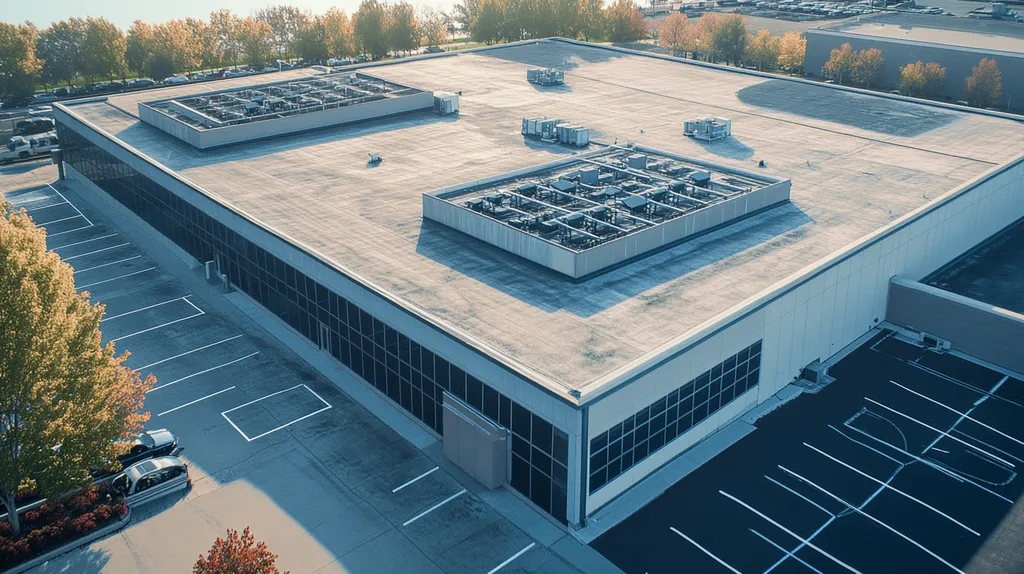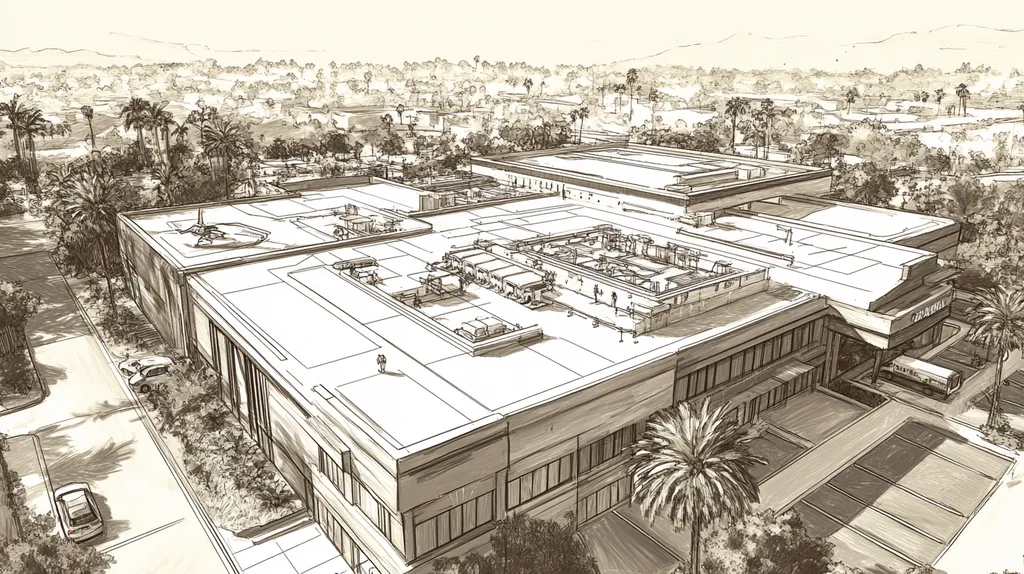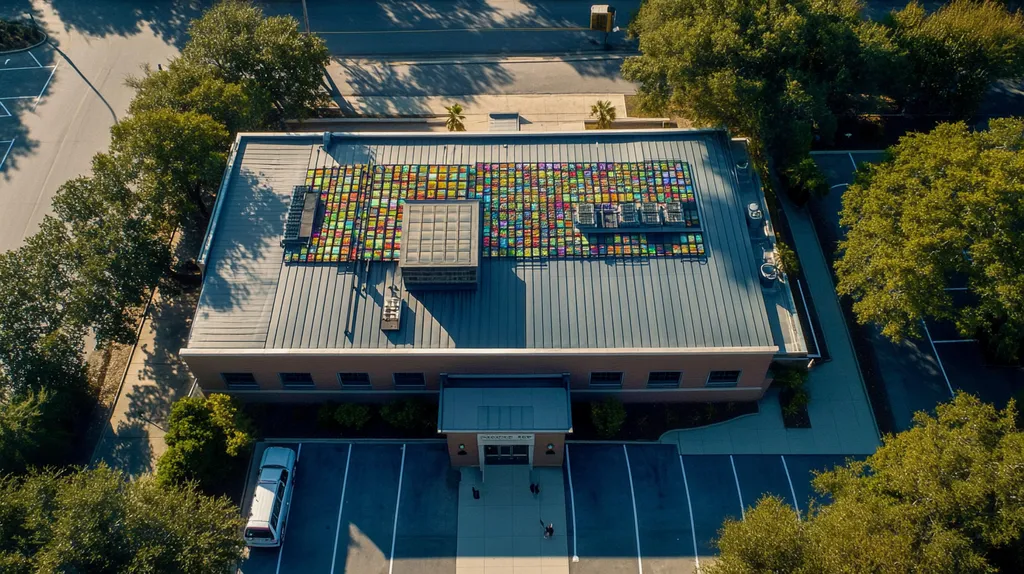In an era where concrete jungles dominate cityscapes, green industrial roofs are emerging as unlikely heroes in urban sustainability. These living systems transform barren rooftops into thriving ecosystems that combat climate change, manage stormwater, and boost biodiversity.
With cities generating over 70% of global carbon emissions, the ecosystem services provided by green roofs aren’t just nice-to-have features—they’re essential infrastructure. From reducing urban heat islands to creating habitats for endangered pollinators, these installations deliver measurable environmental benefits.
This guide cuts through the eco-marketing hype to explain how green roofs actually work, what they cost, and why they matter for your bottom line.
SECTION 1: THE BASICS EXPLAINED
Green roofs aren’t just the latest fad in city planning; they’re essential for urban environmental sustainability. With cities generating over 70% of global CO2 emissions, adopting green roofs can make a real impact. These living layers help cut down emissions, combat urban heat islands, and create valuable habitats for wildlife. For property owners and facility managers, grasping the fundamentals of green roofs is a game-changer for building performance and community well-being.
What It Is (In Plain Language)
A green roof is a rooftop ecosystem, featuring vegetation growing over a waterproof membrane. This innovative setup not only protects your building but also brings an array of ecological benefits. Green roofs can vary from extensive designs with low-maintenance plants to intensive ones that support larger flora, even small trees.
These roofs excel at soaking up rainwater, improving air quality, and providing natural cooling to buildings. By holding back stormwater, they lessen the chances of floods in our concrete jungles, making them indispensable in urban areas.
Towns and cities are increasingly incorporating green roofs into their sustainability efforts. These installations help meet regulations targeting water runoff and air pollution improvement. Knowing how green roofs function is key to making smart investment decisions for your property.
Ultimately, a green roof is a transformation of an ordinary flat surface into a vibrant, living ecosystem that enriches the urban environment.
Why It Matters (To Your Building)
Adding a green roof can boost a building’s value and attractiveness like nothing else. Properties sporting green roofs enjoy heightened marketability for their eco-friendly appeal, drawing in tenants while justifying higher rental rates.
Energy efficiency is another significant advantage. Green roofs act as natural insulators, slashing heating and cooling costs, which translates to long-term savings as energy prices continue to climb.
Green roofs also promote mental well-being. Research indicates that access to green spaces alleviates stress and enhances productivity. An improved work environment can lead to happier employees, ultimately contributing to better retention rates.
For property managers, investing in a green roof is not just a step toward sustainability; it’s a savvy move that brings both financial gains and aligns with progressive urban development trends.
How It Works
Green roofs are engineered with multiple layers, each serving a special purpose, starting with a waterproof barrier to prevent leaks. On top, a drainage layer ensures excess water can escape, while a filter layer keeps everything tidy by retaining soil.
Above these, there’s a growth medium that supports a variety of plants. The species selected for green roofs are generally drought-resistant and low-maintenance, needing minimal water after they’re established.
These plants engage in photosynthesis, soaking up CO2 and releasing oxygen, which cleans the air. Additionally, they help reduce surrounding temperatures, further cooling the urban environment.
Moreover, green roofs effectively catch and utilize rainwater, minimizing stormwater runoff. This alleviates the load on local drainage systems and naturally filters pollutants, benefiting the entire watershed (source: BioScience).
SECTION 2: PRACTICAL APPLICATIONS
Green roofs are not just a trendy addition to city skylines; they’re critical tools for urban sustainability. With cities facing immense challenges like heat islands and overwhelming stormwater runoff, green roofs provide practical solutions. Research shows they can slash building energy costs by up to 25% while reducing stormwater runoff by 30%. For property owners and facility managers, understanding these applications is essential for maximizing long-term benefits.
Common Uses & Examples
Green roofs come with an impressive versatility, addressing various needs across different sectors. Many commercial spaces, including office towers and warehouses, are turning to green roofs to enhance energy efficiency. For example, the green roof atop Chicago’s City Hall has not only cut down energy costs but has also created a space for recreation.
Beyond energy savings, these roofs can host gardens and even urban farms, enhancing visual appeal while promoting local food production. Companies like Urban Bloom have made strides in establishing rooftop gardens, seamlessly merging agriculture with sustainable design.
Moreover, green roofs are fantastic for biodiversity. They create welcoming habitats for urban wildlife, including bees and birds, something increasingly valued by property owners. This trend has sparked a rise in green roofs in bustling cities like New York and Toronto.
From boosting property values to nurturing community ties, the practical impact of green roofs clearly demonstrates how sustainability can thrive alongside functionality.
When You Need It Most
The urgency for green roofs has never been clearer, especially in rapidly growing urban areas. Cities are grappling with challenges like flooding, heatwaves, and declining air quality. Green roofs help absorb rainwater, significantly lowering flood risks.
In extreme weather, conventional roofs may buckle under the weight of heavy rainfall, leading to costly repairs. In contrast, green roofs can retain up to 70% of precipitation, providing a crucial safeguard against runoff—particularly vital in storm-prone regions.
Additionally, during heat waves, green roofs can cool down surface temperatures, maintaining comfort below. Some studies indicate outdoor air temperatures could drop by 5 degrees Fahrenheit due to these installations. That cooling effect eases the burden on HVAC systems, translating into considerable savings.
Investing in green roofing is a timely decision for property owners in climate-sensitive areas, offering immediate and long-lasting benefits to address pressing urban concerns while enhancing property resilience.
Interactions With Other Systems
Green roofs don’t exist in a vacuum; they actively engage with various urban systems. They significantly improve air quality by filtering harmful pollutants, benefiting not just occupants but also the surrounding community and fostering a healthier urban environment.
These roofs can function as key players in integrated stormwater management strategies. When paired with permeable pavements and rain gardens, they create a cohesive system that dramatically reduces overall stormwater runoff, enhancing urban resilience.
Furthermore, green roofs harmonize with renewable energy systems. By providing superior insulation and lowering overall energy loads, these roofs can make solar panels even more efficient. Thoughtful placement of solar panels on green roofs can boost energy production, maximizing the potential of roofing assets.
Understanding these interconnected benefits highlights that investing in green roofs can yield extensive returns. As urban challenges evolve, the synergy between green roofs and other systems will be vital for fostering sustainable development.
SECTION 3: KEY TERMINOLOGY DECODED
Grasping the terminology related to green roofs is more critical than ever for property owners and facility managers. Misunderstandings can lead to overlooking the significant advantages these systems offer. Did you know that urban areas can experience temperature reductions of up to 5°F thanks to green roofs? This section breaks down key terms, demystifies industry jargon, and simplifies measurements to empower informed decisions.
Essential Terms Explained
Green roofs, often referred to as ‘living roofs,’ integrate vegetation directly into a building’s rooftop. These systems consist of several layers: a waterproof membrane, drainage components, and a growing medium.
Another significant concept is ‘biodiversity,’ which highlights the variety of life that thrives in various ecosystems. In the context of green roofs, biodiversity is enhanced as they provide habitats for birds, insects, and other critters.
Then there’s ‘stormwater management,’ which is all about controlling runoff through sustainable infrastructure. Green roofs excel at slowing down water release and promoting absorption, crucial for preventing urban flooding.
Lastly, let’s tackle the ‘urban heat island effect.’ In short, this phenomenon describes how cities can be much warmer than surrounding rural areas due to human activity. Green roofs play a big role in cooling urban surfaces, making them a practical solution.
Industry Jargon Translated
Terms like ‘substrate’ might seem daunting, but they’re vital to understanding green roofing. Substrate refers to the specialized growing medium that supports plant life, ensuring it retains water and allows for necessary drainage.
The debate between ‘intensive vs. extensive green roofs’ is another important distinction. Intensive roofs feature deeper soil layers that can support larger plants and more complex ecosystems, while extensive roofs have shallow soil and mainly host drought-resistant vegetation.
‘Thermal performance’ is also key, indicating how well a roof insulates a building. Green roofs generally outperform traditional roofs, cutting down heat transfer and keeping interiors comfortable.
Finally, when you hear ‘vegetative cover,’ think about the amount of roofing surface that’s covered by plants. Greater coverage yields more significant benefits for absorption, insulation, and wildlife habitats.
Measurement & Units Simplified
Understanding measurements like ‘square footage’ is essential for assessing roof area in commercial properties. The benefits of green roofs can often be broken down per square foot, making their value clearer.
‘Water retention capacity’ is another vital measurement, indicating how much rainfall a green roof can capture. Often expressed in inches, this figure shows how effectively a roof manages stormwater.
Lastly, cost is frequently expressed in dollars per square foot, providing an easy way to measure upfront investments against future savings from energy and maintenance related to green roofs.
SECTION 4: DECISION FACTORS
As urban landscapes wrestle with climate change, the choice to invest in green roofs is loaded with consequences. The costs, performance, and durability of a green industrial roof play a pivotal role in shaping sustainability strategies for entire communities. Property owners and facility managers must meticulously evaluate these factors to unlock the full potential of green roofing solutions.
Cost Considerations
Let’s be real: installing a green roof isn’t the cheapest route out there. Initial investment typically exceeds that of conventional roofs, thanks to specialized labor and the need for innovative materials, plus drainage and irrigation systems that don’t just look good on paper.
However, keep your pencil sharp! While those upfront numbers might make some folks flinch, the savings in the long haul can stack up. Green roofs serve as natural insulators, slashing energy expenses by trimming heating and cooling demands.
Plus, don’t forget to dig into local incentives. Tax breaks or grants for green roofs can significantly sweeten the deal, helping offset those early costs. Do your homework and tap into every available program to maximize financial gains.
So, when calculating investment costs, remember to factor in long-term savings from increased energy efficiency and enhanced property value—not just the sticker price.
Performance Trade-offs
Performance can swing dramatically based on plant choice and roof design. Decision-makers should pay close attention to how different vegetation impacts drainage, insulation, and even the roof’s load capacity.
Green roofs excel at stormwater management by soaking up rain and cutting down on runoff. But don’t kid yourself—these beauties need ongoing TLC, especially during dry spells, to keep plants healthy and roofs structurally sound.
In the lifespan department, traditional roofs cap out around 20 years. Meanwhile, with the right care, green roofs can outlast that by a significant margin, ultimately saving you from frequent replacements.
Being cognizant of these trade-offs ensures businesses pick solutions that not only tick the boxes for sustainability but also align with operational goals.
Lifespan & Durability Factors
Lifespan and durability are non-negotiable when it comes to green roofs. With the right setup and maintenance, these living layers can last over 40 years—far exceeding many standard roofing options.
But let’s not sugarcoat it—durability hinges on a mix of components, including plant selection, growing medium, and overall roof design. Smart engineering practices can help fend off climate-related wear and tear, keeping your roof in tip-top shape.
On the flip side, property managers need to buckle down on maintenance tasks. Regular inspections are essential to catch problems before they spiral, like pesky water pooling or plant death that could sabotage the whole setup.
Ultimately, a long-lasting green roof not only contributes to building longevity but also enhances urban biodiversity and helps alleviate heat island effects—driving home the value of diligent upkeep.
SECTION 5: COMMON CHALLENGES
The rise of green roofs in industrial settings is an absolute must, but property owners often encounter a minefield of challenges. From skyrocketing maintenance costs to structural woes, the stakes couldn’t be higher. Alarming statistics indicate that nearly 30% of green roofs face issues within the first two years post-installation. Grasping these common pitfalls and their solutions is essential for launching successful green roof projects. This section unpacks frequent problems, warning signs indicating trouble, and preemptive strategies to ensure effective green roof management.
Frequent Problems & Solutions
Green roofs can face a host of issues, with water accumulation and poor drainage often taking the lead. If a roof lacks a proper drainage system, excess water can wreak havoc, stressing plants and risking structural damage. A well-designed drainage layer isn’t just an afterthought; it’s a mission-critical component.
Pest infestations represent another serious threat that many owners underestimate. Ignoring the health of the plants can result in an insect or disease outbreak that spirals out of control. Integrated pest management techniques are not just savvy—they’re necessary to keep these issues in check.
Then there’s the pesky problem of root penetration into roofing membranes. This can jeopardize the roof’s waterproofing over time, which is the last thing anyone wants. Employing robust root barrier systems can mitigate this risk, letting the plants flourish without putting the roof in danger.
Finally, improper plant selection can significantly impair roof performance. Opting for native or drought-resistant plants that are adapted to the local climate can enhance sustainability, reduce maintenance costs, and keep the green roof looking vibrant.
Warning Signs To Watch For
Property owners must stay vigilant for telltale signs that a green roof is starting to falter. One such indicator is standing water, which might point to serious drainage issues. When water pools up, it’s a clarion call for immediate assessment and action.
A decline in plant health is another critical sign. If plants are yellowing or wilting, it could mean inadequate watering or an impending pest siege. Regularly evaluating plant conditions can catch these problems early and prevent costly rehabilitation.
Visible damage to the roof membrane, such as blisters or cracks, is non-negotiable; it demands immediate investigation. These issues can lead to leaks and escalating maintenance costs if not tackled without delay.
Mold or fungal growth is equally concerning. Not only can this affect the health of the greenery, but it also creates structural vulnerabilities. Regular inspections can help nip these problems in the bud before they metastasize into larger headaches.
Preventative Approaches
Preventative maintenance is vital for the long-term success of green roofs. Property managers should implement routine inspections to catch potential pitfalls before they evolve into crises. An annual check can reveal drainage blockages, root issues, and overall plant health, paving the way for proactive solutions.
Installing a proper irrigation system is essential for optimal plant growth, especially during those dry spells that can turn vibrant greenery into a barren wasteland. Automated watering systems are a no-brainer for maintaining consistent moisture levels across varying weather conditions.
Developing a comprehensive maintenance strategy that suits the unique features of each green roof can also be a game changer. This blueprint should include seasonal plant care, drainage evaluations, and pest management tactics.
Education is part of the equation too. Engaging in workshops or training sessions can greatly enhance facilities managers’ grasp of the distinctive challenges and solutions linked to green roofs, ultimately leading to wiser management decisions.
SECTION 6: NEXT STEPS & RESOURCES
As urban landscapes expand, the pressure for sustainable solutions skyrockets. Green roofs offer more than just eye candy; they deliver critical ecosystem services that tackle urban heat islands, manage stormwater, and purify air quality. Property owners and facilities managers need to act fast to harness these benefits and implement green roofs effectively.
Questions To Ask Providers
When diving into green roof installation, property owners must come armed with specific questions for potential providers. Start with inquiries about their experience with similar projects; this reveals their expertise. Dig deep into details about plant species choices, maintenance protocols, and the anticipated lifespan of the roof to set realistic expectations.
Don’t shy away from asking about environmental impact assessments. It’s vital to grasp how a green roof will mesh with the local ecosystem to maximize its benefits. Additionally, ensure they comply with local and national regulations to sidestep future headaches.
Request to see examples from their portfolio, including before-and-after photos and performance metrics. This transparency helps validate claims and manage expectations. Finally, confirm that the providers offer support for routine maintenance; this is essential for sustaining the roof’s success over time.
Industry Standards & Guidelines
Understanding industry standards can significantly boost the success of a green roofing project. Organizations like Green Roofs for Healthy Cities (GRHC) supply detailed guidelines on design, installation, and ongoing maintenance. These resources ensure green roofs live up to their ecological promises.
Reviewing American National Standards Institute (ANSI) guidelines related to green roofs can also be beneficial. These standards cover safety, structural integrity, and sustainable practices, ensuring that your investment performs well and reassures property managers and owners.
Consider aiming for certifications like the Living Building Challenge to steer your project toward recognized sustainability benchmarks. Familiarity with these standards not only helps get the most out of your investment but also showcases commitment to best practices throughout the process.
Further Learning Simplified
Staying current on green roofing advances is crucial, and industry literature is a goldmine. Numerous guides and online resources cater to commercial and industrial property owners looking to expand their knowledge. Websites like the Eco Roofs Council provide insights into recent innovations and trends.
Don’t miss out on workshops or webinars, which can offer deeper dives into green roof technology. Many industry thought leaders share expertise on everything from biodiversity enhancements to energy efficiency tips. Plus, these events create networking opportunities with fellow property owners dealing with similar challenges.
Subscribing to industry publications is another way to keep informed about the latest products, technologies, and research. Integrating continuous learning into decision-making ensures property owners and facility managers make impactful, informed choices that greatly enhance urban sustainability.
The Bottom Line
With cities facing unprecedented environmental challenges, green industrial roofs have evolved from a luxury into a necessity for urban sustainability.
The ecosystem services they provide – from reducing urban temperatures by up to 5°F to managing 70% of stormwater runoff – deliver measurable benefits that compound over time.
While initial costs remain higher than traditional roofing, the long-term savings through reduced energy consumption, extended roof lifespans, and enhanced property values make green roofs an increasingly attractive investment.
As climate pressures mount and cities adopt stricter environmental regulations, property owners who embrace green roofing solutions today will be better positioned to thrive in tomorrow’s urban landscape.
The future of sustainable cities isn’t just about building green – it’s about building smart.
FREQUENTLY ASKED QUESTIONS
Q. What is a commercial roof and its ecological benefits?
A. A commercial roof is a rooftop designed for business use, typically flat. Green options reduce CO2 emissions, combat heat islands, and provide wildlife habitats, transforming your urban space into an eco-friendly oasis.
Q. How do green industrial roofs improve energy efficiency?
A. By acting as natural insulators, these roofs can reduce heating and cooling costs. They minimize energy consumption, allowing for significant savings and creating a more sustainable building environment.
Q. What are the benefits of green roofs for urban sustainability?
A. Green roofs help mitigate urban heat islands, reduce stormwater runoff, and improve air quality. These benefits directly contribute to a healthier, more sustainable urban environment and a more pleasant living space.
Q. How do I choose the right plants for my industrial roof?
A. Selecting native or drought-resistant plants is key for low maintenance. Also, consider your climate and roof design to ensure optimal growth and sustainability while minimizing upkeep costs.
Q. What are common challenges with green roofs?
A. Challenges include water accumulation, poor drainage, and maintenance needs. Addressing these issues promptly and regularly monitoring your roof’s health can prevent larger, costly problems down the line.
Q. How do I find reliable green roof contractors?
A. Look for contractors with experience in green roofs, positive reviews, and strong portfolios. Ask detailed questions about their methods, plant choices, and maintenance plans to gauge their expertise.
Q. What regulations should I know about for commercial roofs?
A. Familiarize yourself with local building codes, environmental regulations, and green certifications. These guidelines ensure proper installation and operation while maximizing your green roof’s benefits and sustainability.

